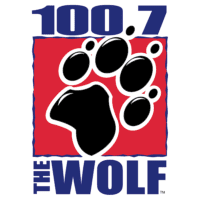
Nielsen’s July PPMs (and some of the spring 2023 diary market books) brought one clear format trend, along with just enough one-off success stories to confound radio handicappers and advocates of other formats.
- Hip-Hop/R&B did not rebound overall, but WERQ (92Q) Baltimore, one of the last outlets pushed out of the top ratings tier during COVID, returned to No. 1, 5.5-7.0 6-plus.
- CHR continues to struggle, but WKQI (Channel 955) Detroit was up 8.1 to 9.6, a station record.
- Christian AC’s great books have taken place in a few markets at a time for a while, but KTIS Minneapolis has grown continuously since January, up 10.3-11.6, the largest non-holiday number in the market since winter ’98.
- Revitalized Alternative KITS (Live 105) San Francisco was up 3.1-3.6, edging out the then-record 3.5 it scored in 1995.
Most notably, KKWF (The Wolf) Seattle has continued to grow since rival KNUC became Triple-A KPNW. KKWF was up 7.4-7.7. That number, a record high for the 100.7 FM frequency in the market, is well ahead of the 5.4 share that KNUC and KKWF combined had a year ago.
Six months ago, on the eve of Country Radio Seminar, it was already possible to identify Country as the most robust of the current-based music formats. It had a series of emerging core and potential core artists. There was still a steady stream of new product being worked to radio. Streaming had informed and seemingly improved the radio airplay charts, but had not made them obsolete.
Country’s strength is now a national news story, particularly after this spring’s crossover success of Morgan Wallen, Luke Combs, and Kane Brown. Last week, Country held the top three positions on Billboard’s Hot 100 for the first time ever, reflecting the Jason Aldean controversy, but also pop radio’s uneven product stream and diminished impact.
The Wolf wasn’t the only Country success story. iHeart’s WFUS (US103) Tampa, Fla., was second in the market, up 6.3-7.0. But there hasn’t yet been an across-the-board “Morgan Miracle,” either in July PPM or spring diary markets. The continued format trend is the growth of Classic Rock. That one was already visible when WAXQ (Q104.3) New York set its own personal record, and a market record for rock radio, in the January PPM. Both those records fell again in July.
In addition, there were Classic Rock success stories for KSLX Phoenix (highest in six years), WBAB Long Island, N.Y. (a station record), KQMT (the Mountain) Denver, WSRV (The River) Atlanta, WMGK Philadelphia, KCFX (The Fox) Kansas City, and KGLK (The Eagle) Houston, which was going through a sale.
As was the case in January, there were also Classic Hits success stories, particularly market-leading KRTH (K-Earth 101) Los Angeles, KXSN (Sunny 98.1) San Diego, and KOLA Riverside. In many markets, both Classic Rock and Classic Hits continue to do well. But as Classic Hits continues to push into (and beyond) the ’90s, often with music that was ratified primarily by female audiences, as opposed to both genders, that evolution seems to be increasing the opportunity for Classic Rock stations that can still play the ’70s and even a few ’60s, and even draw a few younger listeners.
During previous format booms, it was thought that Country and Classic Rock/Classic Hits (or, then, Oldies) tracked up during each other’s cold spells. That was particularly the case when Country became more rock-flavored in the early ‘90s and again in the mid-‘00s. It is certainly possible that Country’s current publicity and rock lean could help draw Classic Rock listeners again this fall.
But perhaps current Country’s cohort is Active Rock, the format with which it currently shares both the artists Hardy and Jelly Roll. (The Hardy/Nickelback connection has been made repeatedly in print since the former’s crossover began.) Active Rock has its own handful of large-market successes but has fewer total listeners to send over.
Over the last few years, when stations doubled down on “New Country” even before the product was there to support it, there were seemingly a few older fans of late-’90s/early-’00s Country who particularly soured on the format. It remains to be seen if the edgier new acts bring them back.
It’s worth noting that The Wolf had already returned some older gold to the library and ended the war of attrition over the “New Country” image even before KNUC’s departure. On this 11 a.m. hour, there are two ‘90s songs.
Here’s KKWF at 11 a.m. on August 9 with Audacy national Country midyear Katie Neal. It’s also worth pointing out that Neal’s breaks are mostly customized here. Only one staged bit was white-labeled, without local calls. When the station played Bailey Zimmerman, Neal had a break talking about his performance at the station’s previous holiday show.
- Dierks Bentley/Breland & Hardy, “Beers on Me”
- Rodney Atkins, “Take a Back Road”
- Kassi Ashton, “Drive You Out of My Mind”
- Luke Combs, “Fast Car”
- Maren Morris, “Rich”
- Russell Dickerson, “God Gave Me a Girl”
- Bailey Zimmerman, “Religiously”
- Alan Jackson, “Chattahoochee”
- Jon Pardi, “Dirt on My Boots”
- Luke Combs, “The Kind of Love We Make”
- Scotty McCreery, “This Is It”
- Luke Bryan, “Play It Again”
- Warren Zeiders, “Pretty Little Poison”
- Jordan Davis, “What My World Spins Around”
- Brooks & Dunn, “Neon Moon”
We’ve already profiled a number of the July success stories this year. Check out our previous First and Fresh Listens to Q104.3, Channel 95.5, and Live 105.
